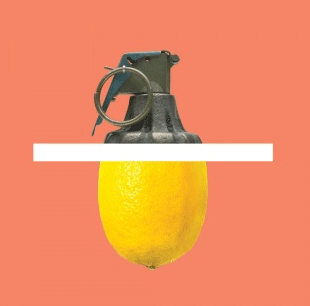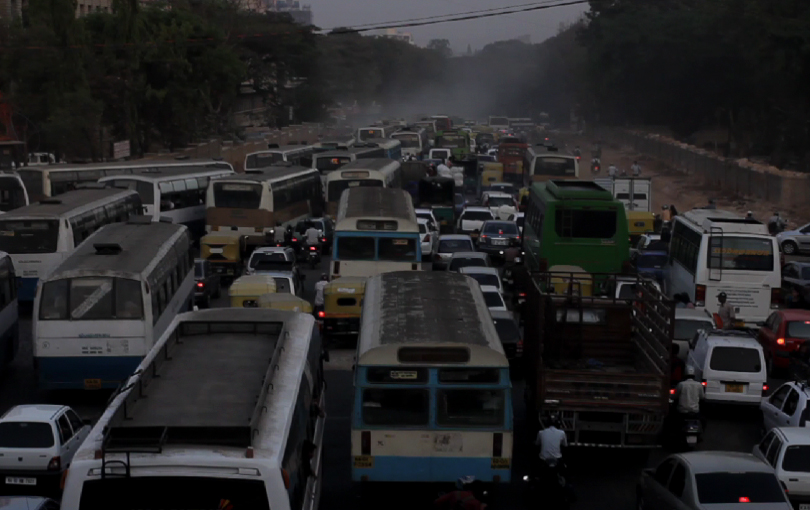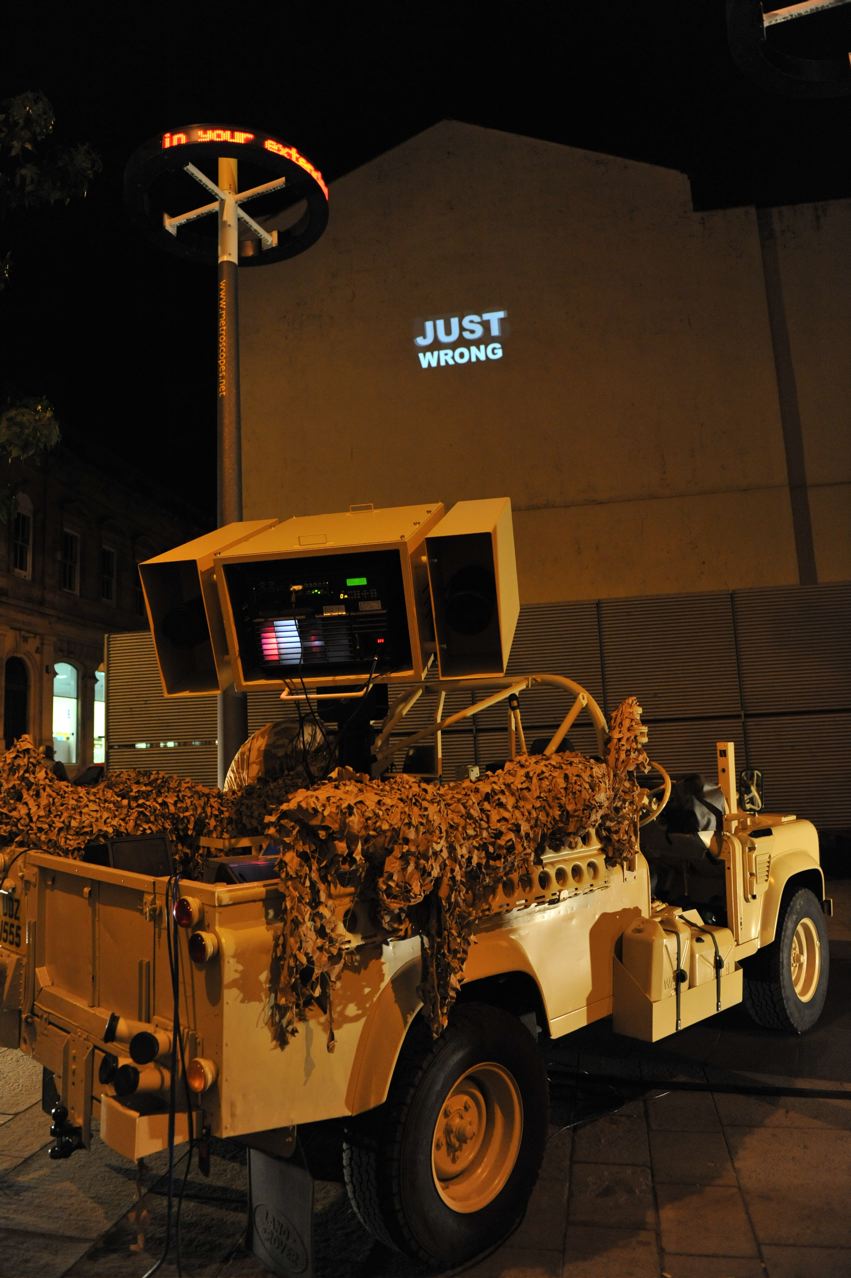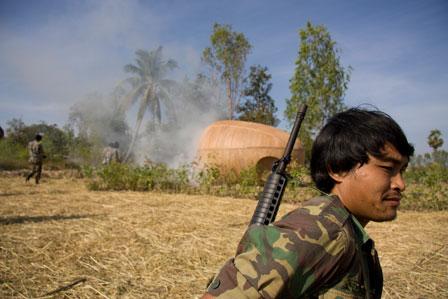
The debut Abandon Normal Devices (AND) launched in the North West of England, 23rd -27th September 2009. The inaugural festival was centred in the city of Liverpool with satellite events taking place in Manchester. AND, a collaboration between FACT (Foundation for Art and Creative Technology) in Liverpool, folly in Lancaster and Cornerhouse in Manchester positions itself as a mixture of new cinema, digital culture and media art, showcasing work in partnership with galleries, venues and public spaces around the city. Over five days, the festival featured a broad array of conferences, talks, exhibitions, screenings, performances and online works, with artists and practitioners from a wide range of backgrounds including, The Yes Men, MARIN (Media Art Research Interdisciplinary Network), Blast Theory, DJ Spooky and Michael Connor. FACT acted as the central hub for the festival and hosted the majority of screenings, talks and events; it also celebrated its 20-year anniversary on the opening night.
In line with its snappy title, the festival set out to discard all that is typical, regular or average, seeking to question normality in an array of forms. There was a particular focus on exploring disruption to traditional methods of production and distribution in cinema and media art. Interfering and interrupting the familiar and ordinary were played out in public space, on screen and through performance.
The festival opened with a new performance/lecture by Carolee Schneemann, renowned for her performance work of the 60’s and 70’s that challenged the normalised perceptions of the body, sexuality and gender. In a work which took the format of a lecture, titled Mysteries of the Iconographies, Schneemann went on a journey through the creative products of her life from early childhood drawings, through painting, to performance and video installation. The performance was accompanied by an exhibition of a new multi-screen video installation at Tate Liverpool titled Precarious. The work consists of fragments of visuals and sounds referencing Schneemann’s personal surroundings including an affectionate yellow cockatoo dancing to the Gnarls Barkley song ‘Crazy.’
Well known for challenging traditional means of film distribution, Jamie King presented a preview screening (quite literally straight from the editing booth) of his new feature film, Dark Fibre. Set in India, Dark Fibre is King's first feature, co-directed with Peter Mann. The film is a portrayal of a young ‘Cablewallah’, a term used to describe the workers who install, maintain and manage the labyrinth-like local cable TV networks of Bangalore. The character lives between these sprawling backstreet enterprises and the thriving shiny big business city. Dark Fibre is produced in a unique crossover documentary/fiction style, with the lead actor embedded in real life situations and the resulting semi-scripted dialogue and events making up the action of the film. Produced for a minimal $100K and supported by FACT and the Centre for Internet and Society, among others, King is hoping to repeat the success of his previous documentary Steal This Film which, with the help of The Pirate Bay, reached 6 million people across the globe.

As King described in a workshop on the film, he intends to freely distribute Dark Fibre through serialisation online and eventually through P2P networks and, fittingly, the Indian pirate DVD market stalls that are featured in the film. In doing so, he seeks to pose a challenge to the traditional distribution methods of the established film industry and the copyright and proprietary law that, as he describes, is designed for a different phase of technological history. Despite the underdeveloped plot, it as at times a beautiful and absorbing film, the documentary/fiction crossover style leads you into a fascinating portrait of the contrasts and contradictions of a contemporary Information City.
In one of the afternoon artist presentations James Coupe, currently in residence at folly, presented his new project Surveillance Suite. Similar to Dark Fibre, the production of Surveillance Suite turns traditional methods of filmmaking upside down. Coupe takes an algorithmic approach to cinema and, in doing so, transforms reality into narrative. By using face profiling software and video databases, Surveillance Suite creates itself as an automatically edited film, where characters can be played by multiple individuals with the same prerequisite features. The video footage for Surveillance Suite is shot fresh each day, then analysed by profiling software that can detect and classify people according to age, gender, race, facial expression and location. The result is an automated and anonymous casting system that brings together the ‘actors’ and locations from random video footage. Coupe essentially reverses the process of writing a script and subsequently making a film.
While some strands of the festival were focused on engaging the sector in debates and discussions (CRUMB presented a one day conference ‘Showing Art in the Age of New Media’) others sought to engage the people of Liverpool in unusual encounters with work scattered around public spaces of the city. KMA’s playful and absorbing Strange Attractors - The Anatomy of Dr Tulp was an interactive light and sound project that responded to the movements of people in the street. As the public encountered the patterns and shapes projected onto a courtyard outside FACT, the projection responded to their presence within the space, shaping itself around their form or enveloping them in light. The scene was then projected through a live feed onto the wall of FACT so those encountering the work could watch themselves interacting with it. The light projections acted both to isolate individuals as well as bring them together. In a constant state of flux, the projections created spontaneous leaps, jumps and ballet like dance moves from members of the public.
Strange Attractors from Tom Wexler on Vimeo.
Also set around the streets of Liverpool, and one of the festival highlights, was Krzysztof Wodiczko’s War Veteran Vehicle. Wodiczko is well known for disrupting public space in order to challenge the social consciousness through politically charged large-scale public projections. The War Veteran Vehicle roamed the city projecting fragments of dialogue from local veteran soldiers and their families onto different public buildings and monuments each night of the festival, including most dramatically Liverpool's Metropolitan Cathedral. The project is a new developed version of a work originally carried out in Denver in the United States with a converted Humvee. It is made up of three components, a converted British Military Land Rover (where the gun mounting has been replaced with a projector and speakers), bespoke software and the testimony of British soldiers and their families. The Land Rover was driven to different locations around the city with a clear line of sight to blank space on public buildings, and then short fragments of text were projected on to the buildings. A key part of the work is the software that allows these 'bullets' of light and sound to be fired at the building facades. The system was designed in collaboration with Robert Ochshorn of the MIT Center for Advanced Visual Studies. The software becomes the agent to ‘shoot’ visual and aural blasts into the public realm and into the imaginations of passersby. The fragments of speech that were projected were taken directly from discussions with local ex-soldiers and their families about their experience of returning home from war. The British Armed Forces recruit heavily in Liverpool and the northwest of England, thus the project had a particular resonance in the area. The participants worked in partnership with Combat Stress, a charity that specialises in the care of British Veterans who have been profoundly traumatised by harrowing experiences during their service career. As Wodiczko explained in a moving public talk alongside a veteran and his partner, the projections act as a continuation of war into a different theater. For him, the aim is to break the silence within the public sphere about the traumatic experiences of war on soldiers and, also, their families and friends who are often profoundly affected by the return of their loved ones. Wodiczko wants to give soldiers and their families the opportunity to share their experiences, to act in part as psychotherapy and to use the public arena as a healing space. War Veteran Vehicle conveys the lack of public understanding and the impossibility of comprehension of the experiences of those who go to war.

The disruptive nature of war and the lasting deep trauma it can cause was also a theme present in the main exhibition at FACT. Like War Veteran Vehicle, Apichatpong Weerasethakul’s work Primitive, a multi-screen video installation reflects the problems of comprehension and memory for those who have experienced war and those who have not. The work emerged from Apichatpong’s travels through the northeast of Thailand. He filmed in a village called Nabua, a place violently occupied by the Thai army fighting communist insurgents from the 60s to the early 80s. During his time there, Apichatpong worked with the young people of the village to design and build a spaceship that acted as a vehicle for the reimagination of the village in fact and fantasy. The work explores the extinction of memories, and those who try to forget their memories. It is a kind of performative document of the time the artist spent living, working and playing with the young people of the village. It can also be positioned within wider political issues in Thailand and ongoing government censorship in the country.

The artist and filmmaker Duane Hopkins (Better Things) formally spans a similar territory to Apichatpong Weerasethakul, both crossing the worlds of narrative feature film and multiscreen video installation in a hybrid practice between visual arts and cinema. Hopkins’ video installation Sunday at the Open Eye Gallery was part of the exhibition strand of the festival. Sunday is set in the rural idle of the Cotswolds in UK, the work beautifully captures a sense of the boredom and exclusion of teenagers growing up in rural community.

The highlights of the cinema programme screened at FACT were two interesting works which used archives and found footage towards two entirely opposite ends. For those who managed to stay awake for the midnight screening of Craig Baldwin’s Mock Up On Mu, they were treated to a delightful mash-up sci-fi thriller, while the Sunday afternoon screening of Luc Bourdon's The Memories of Angels was a perfectly paced portrait of Montreal in the 50’s and 60’s. Similarly, one of four online works commissioned by the festival, Guthrie Lonergan’s Groundhog Day, reworks the film Groundhog Day into a series of witty slideshow commentaries.
As a new festival, Abandon Normal Devices feels brash and bold yet fidgety and restless. Hopefully it will be able to build on this enthusiasm and translate it into the production of new and engaging work in future festivals. The next festival will transport itself to rural Cumbria and Lancashire where folly will take up the baton in Spring 2010.
Peter Merrington is an Artist and Writer based in Newcastle-upon-Tyne, UK.

